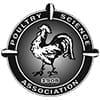Fresh chicken sausage may return value to breast meat affected by myopathies - Interpretive Summary
Published: March 21, 2024
By: https://poultryscience.org/
As the global poultry industry has grown and developed, a great variety of consumer products has emerged, focused on convenience and practicality, that provide opportunities to regain value from carcass parts that may have otherwise gone to waste.
During poultry processing, novel products such as fresh sausages can be an alternative use for compromised meats, such as those affected by deep pectoral myopathy (DPM), a recurrent problem in the pectoral (breast) muscles of birds characterized by degeneration and eventual necrosis and atrophy of the supracoracoid muscles (pectoralis minor, or tenders). The condition can also affect the adjacent pectoralis major muscle (breast fillet), particularly near the compromised portion of the tenders.
Researchers in Brazil conducted a study to determine the influence of DPM on the physical, chemical and microbiological parameters of fresh sausages. Their findings were published in Poultry Science.
The researchers with Paulista State University - UNESP and Darcy Ribeiro State University of Northern Fluminense - UENF collected samples at a slaughterhouse in the state of São Paulo of breast meat from broilers affected by a severe degree of DPM as well as from a control group without the presence of myopathies. A subset of samples was used for microbiological and physical analyses, and the remaining breasts (with injured area removed) were used for preparing fresh sausages and subsequent physical, chemical and microbiological analyses.
Among their findings, the researchers determined that the presence of myopathy changes the color scores of chicken breast meat, especially along the inner surface adjacent to the breast fillet. Furthermore, they found that meat pH increases with myopathy disease severity, and water-holding capacity and cooking loss were altered so that the meat from DPM-affected birds had a softer texture.
They suggested that to mitigate economic losses due to DPM, production of meat derivatives should be considered.
For the fresh sausage analyses, all color values underwent changes, as well as pH and water activity. Notably, there was no influence of DPM on shear force values, meaning sausages did not undergo major changes in qualitative characteristics, especially regarding tenderness, which is important for consumer acceptance, the researchers pointed out.
Fresh sausage made from chicken breasts affected by DPM had higher protein levels, which was linked to a compensatory mechanism in which atrophy caused by DPM triggers an increase in the diameter of the remaining muscle fibers.
Lipid oxidation was only reported to have changed in raw meat samples, and values in fresh sausages did not differ between groups. The researchers suggested that DPM possibly nullified the effect of fat degradation and the antioxidant used in making the sausages was sufficient to prevent further oxidation.
Raw samples submitted for microbiological analysis found all values (Salmonella spp., Escherichia coli, Staphylococcus aureus and psychotropic microorganisms) within acceptable standards.
As to the prevalence of DPM and other muscle disorders in broiler chickens, the researchers suggested that “profound changes in muscle architecture and metabolism induced by genetic selection practices” for fast-growing and high-yielding birds could be among the main predisposing factors responsible for various myopathies in poultry.
The Brazilian researchers concluded that fresh sausages made from DPM-affected meat are viable alternatives and can be used to create consumer products with more favorable qualitative characteristics than whole breast meat from chickens affected by DPM.
What does this mean for producers?
- Fresh sausages made with meat from chickens affected by DPM had chemical, physical and microbiological aspects mostly similar to meat not affected by DPM.
- Meat derivatives such as fresh chicken sausages produced from breast meat affected by myopathies may be a viable alternative consumer product to regain lost value from chickens affected by muscle disorders.
The full paper, titled “Physical, chemical, and microbiological evaluation of sausages produced with chicken meat affected by deep pectoral myopathy,” can be found in Poultry Science and online here.
DOI: 10.1016/j.psj.2023.103004
Source
https://poultryscience.org/Related topics:
Authors:

Recommend
Comment
Share

Would you like to discuss another topic? Create a new post to engage with experts in the community.



